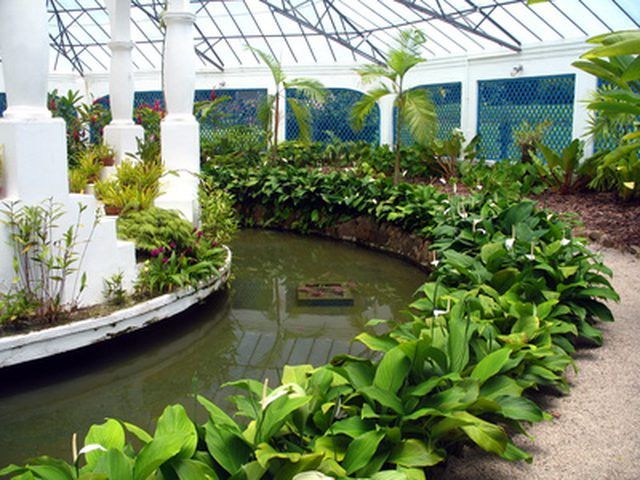Bulbs
Flower Basics
Flower Beds & Specialty Gardens
Flower Garden
Garden Furniture
Garden Gnomes
Garden Seeds
Garden Sheds
Garden Statues
Garden Tools & Supplies
Gardening Basics
Green & Organic
Groundcovers & Vines
Growing Annuals
Growing Basil
Growing Beans
Growing Berries
Growing Blueberries
Growing Cactus
Growing Corn
Growing Cotton
Growing Edibles
Growing Flowers
Growing Garlic
Growing Grapes
Growing Grass
Growing Herbs
Growing Jasmine
Growing Mint
Growing Mushrooms
Orchids
Growing Peanuts
Growing Perennials
Growing Plants
Growing Rosemary
Growing Roses
Growing Strawberries
Growing Sunflowers
Growing Thyme
Growing Tomatoes
Growing Tulips
Growing Vegetables
Herb Basics
Herb Garden
Indoor Growing
Landscaping Basics
Landscaping Patios
Landscaping Plants
Landscaping Shrubs
Landscaping Trees
Landscaping Walks & Pathways
Lawn Basics
Lawn Maintenance
Lawn Mowers
Lawn Ornaments
Lawn Planting
Lawn Tools
Outdoor Growing
Overall Landscape Planning
Pests, Weeds & Problems
Plant Basics
Rock Garden
Rose Garden
Shrubs
Soil
Specialty Gardens
Trees
Vegetable Garden
Yard Maintenance
How to Build a Hydroponic Greenhouse
How to Build a Hydroponic Greenhouse. Hydroponics is a growing method that uses water to provide nutrients to plants instead of soil. Hydroponics requires a greenhouse for optimal efficiency, as rain water can disrupt the system by diluting the nutrients in the water, which could kill the plants. The system requires less water to operate than a...

Hydroponics is a growing method that uses water to provide nutrients to plants instead of soil. Hydroponics requires a greenhouse for optimal efficiency, as rain water can disrupt the system by diluting the nutrients in the water, which could kill the plants. The system requires less water to operate than a soil-based system, but requires electricity to run the equipment.
Things You'll Need
Lumber
Treated lumber
Glazing
Weather stripping
Water hose
4-inch diameter PVC pipe
Drill with hole cutting attachments
?-inch hose coupling
2-inch net pots
Pea gravel/clay pebble
Water tank
Timer for the pump
Fertilizer
Greenhouse
Use treated lumber to build the feet of the frame and regular lumber for the walls and the roof. Make sure you comply with any local regulations. To estimate the size, a hydroponic greenhouse will produce around three times as much as the equivalent area of dirt.
Build the greenhouse so the long side faces south and does not receive shade during the winter. If your greenhouse is to be used during the winter, you can build the south wall slanted to maximize solar energy during the colder months. Build the wall at 90 degrees minus the latitude of your location.
Build a wall on the north side. Use exterior siding to close the outside. Put bat insulation in the wall and close it with wood or other humidity-proof material. Cover the rest of the sides and the roof with glazing. Make sure that no air leaks exist in by going around the envelope with incense to locate air leaks.
Install the water hose on the back insulated wall in direct sunlight so it canít freeze during the winter.
Install the electric components using moisture-proof outlets and lights.
Building the Hydroponic System
Drill holes in the 4-inch diameter PVC pipe. Make them ?-inch smaller than the diameter the pots you will be using. Drill the holes every 6 inches for small herbs, 12 inches for medium plants, such as salads or 18 inches for large plants, such as tomatoes.
Drill a ?-inch hole at each end of the pipe, making sure the end cap will not cover part of the hole. One needs to be on top of the pipe (water in) and the other on the bottom (water out.)
Install a ?-inch hose coupling in both the holes.
Build a support rack with 2x4 lumber. Make it 1 foot shorter than the PVC tubes and with transverse supports every 2 feet.
Use a ?-inch hose to connect the pump to the water in the hole. A pump of 120 gpm at 1 PSI should be enough for most home systems. Use a ?-inch hose to connect the water out hole to the water tank. Connect the pump to the timer, lower the pump in the water and turn it on to test the system for leaks.
Feeding the System
Fill the tank with water and put it on the timer. Use the timer to let the pump run 30 minutes every two hours.
Put liquid fertilizer in the water, following the instructions on the bottle.
Use rock wool cubes to start your plants from seeds. If you start from store brought plants, wash the dirt off in the water and only put the roots in the pebble in the net pots. Put the pot in the hole of the PVC.